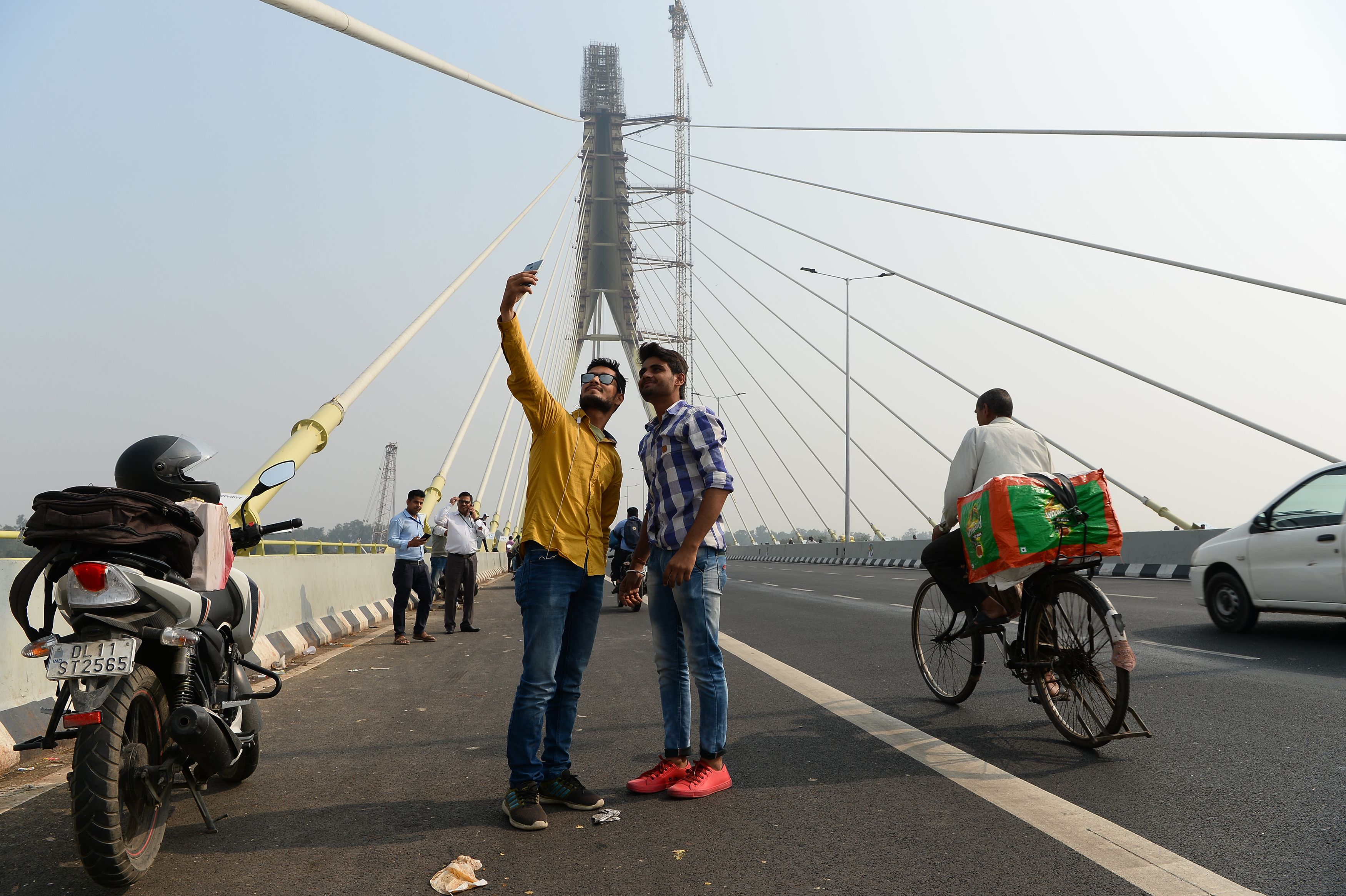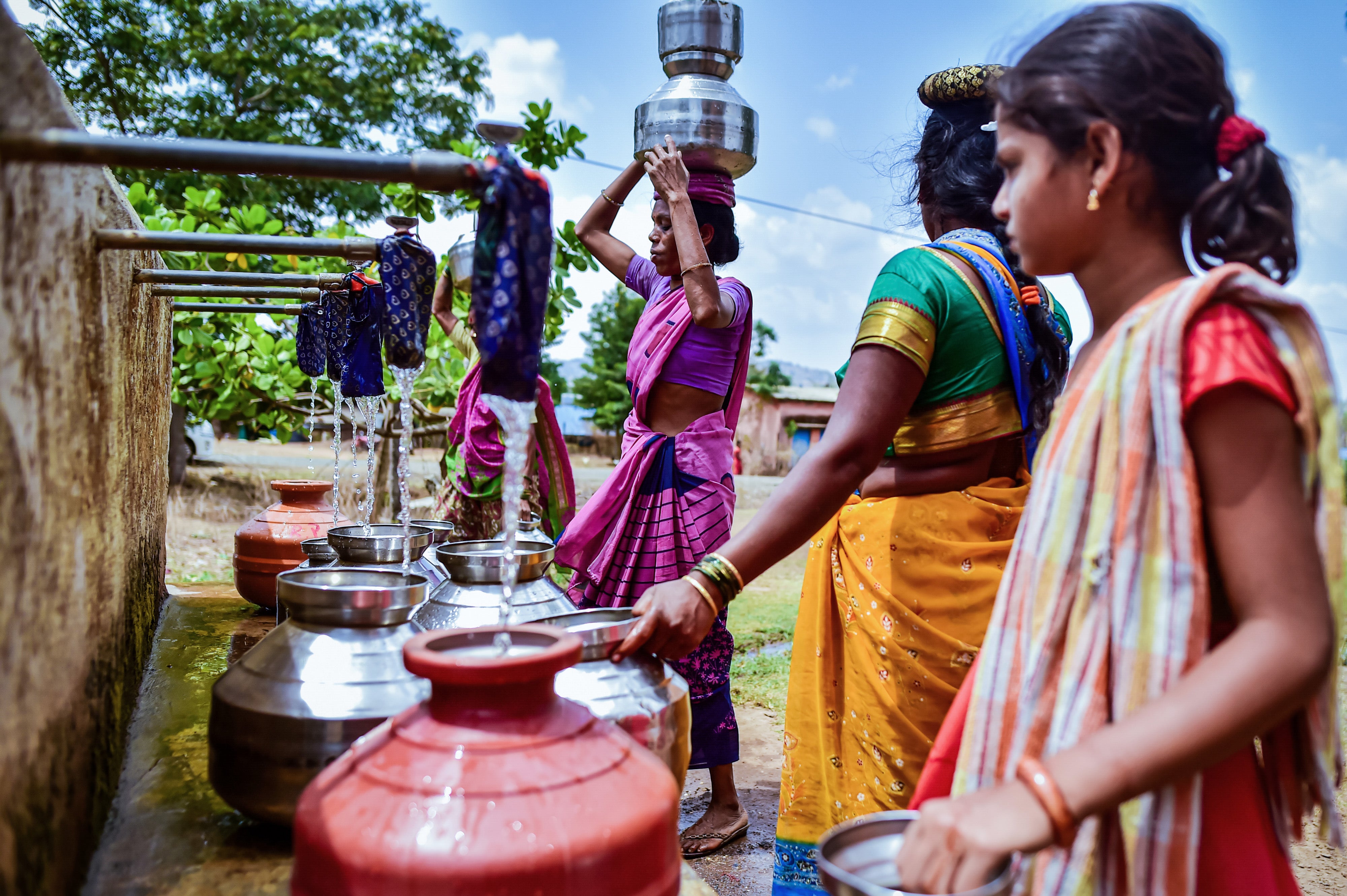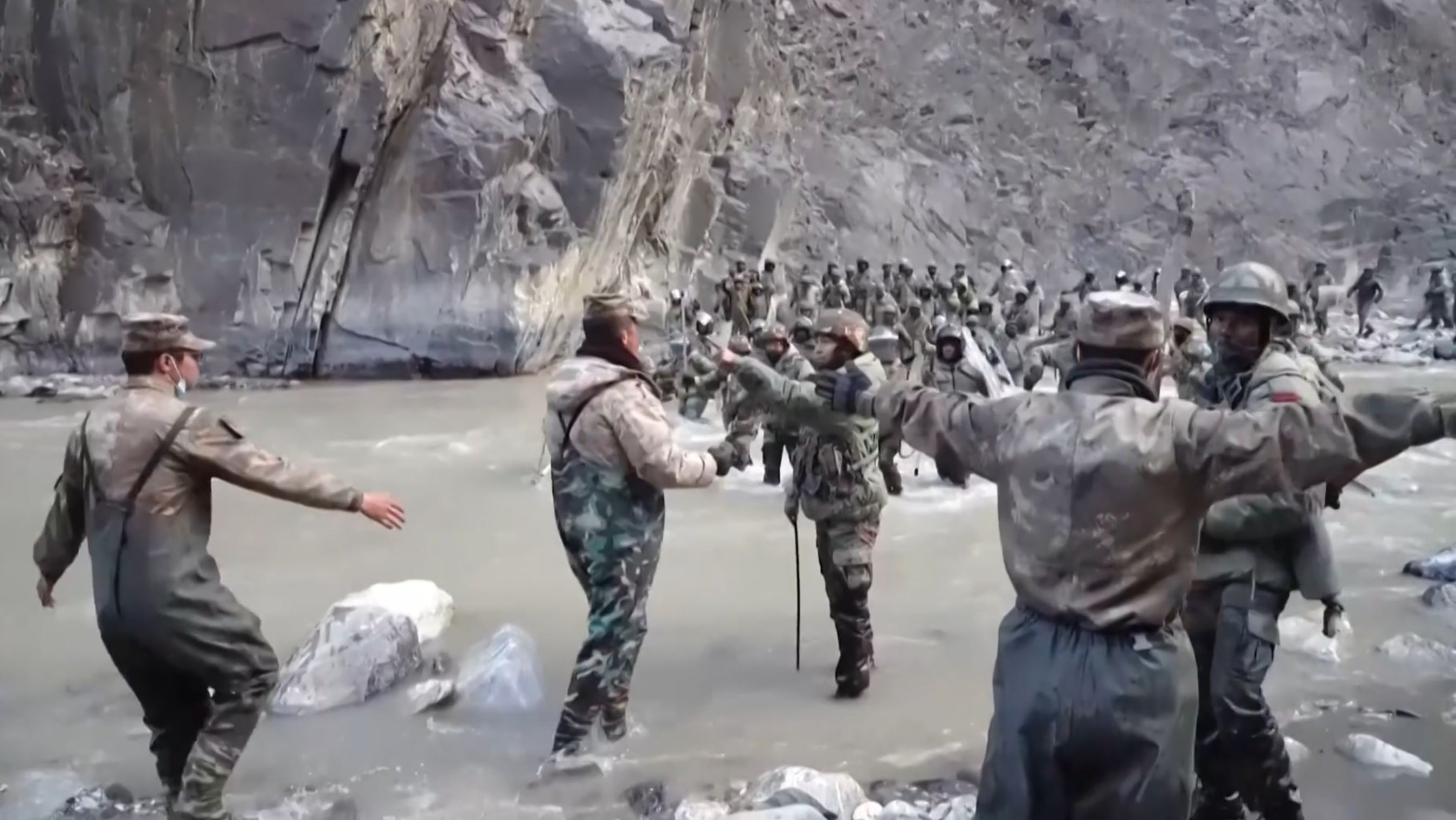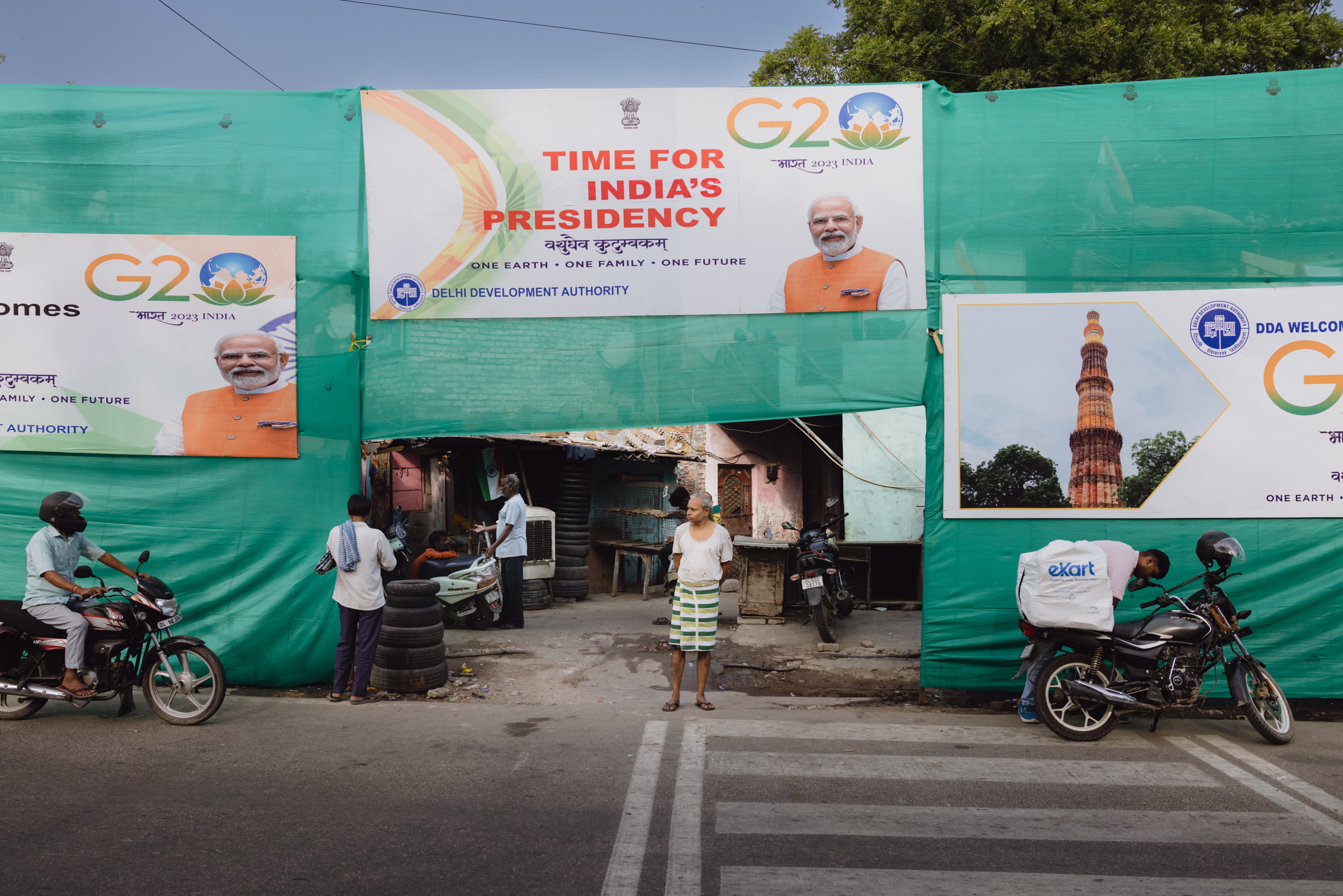
In an exclusive interview with The Independent in September, Tony Blair made a bold claim – that India will rise to become a global superpower by 2050. “By the middle of this century, you’re going to have three superpowers – America, China, and you’re going to have India. All other countries are going to be small in comparison,” the former prime minister said.
India’s own prime minister, Narendra Modi, has set out similar aspirations, saying India will achieve “developed” status by 2047. He also vowed to make his country “the third largest economic superpower” by the end of his third term, though he made that pledge before a disappointing set of election results that saw him lose his outright majority in June 2024.
Most projections for India’s future strength are based on two simple facts – that it has now surpassed China to become the most populous country in the world, and its $3 trillion economy, already the fifth-largest, is growing at a faster rate than any other major nation.
Beyond simple economics, India’s importance has also risen geopolitically; courted by the US as a counterweight to China in the Asia-Pacific yet able to maintain strong ties to Russia at the same time, it has carved out a niche that could prove a model for other Global South nations. But does diplomatic independence equate to superpower status – or is it the ability to project power abroad that defines American and Chinese dominance?
India surpassed the UK as the world’s fifth-largest economy in 2023, and analysts at Morgan Stanley agree with Modi in predicting it will overtake Japan and Germany to reach third position by 2027.
Yet in a test to Modi’s ambitious plans, India’s economy is experiencing its slowest growth in the last two years, dampening the economic outlook for the full financial year. GDP grew at just 5.4 per cent in the July-September quarter, well below the Reserve Bank of India’s forecast of 7 per cent. Economists say there are signs that the expansion of the Indian economy is losing momentum.

These high GDP growth figures also appear inconsistent with other economic indicators such as employment rates, private consumption and export performance. Consumer expenditure accounts for about 60 per cent of India’s GDP but has been badly affected by a slowdown in urban spending due to food inflation and sluggish real wage growth.
India’s goods exports, typically the main driver of a country’s economic growth, are also flatlining. In the 12 months leading up to August 2024, India’s total goods trade was valued at $1.1 trillion – the same level as it was two years ago.
And then there is the question of whether GDP growth really translates to improved outcomes for the population as a whole. It will be hard for India to claim superpower status for as long as it remains classified as a lower-middle-income country, a designation it has held since 2007, based on its per capita income of around $2,400 (£1,885). The World Bank estimates that it would take another 75 years for India’s average to reach even a quarter of the US.
In its 2024 report World Inequality Lab found that the current golden age of Indian billionaires has led to a dramatic surge in income inequality, placing India among the most unequal countries globally, surpassing the US, Brazil, and South Africa.
According to the economists behind the study, including renowned French economist Thomas Piketty, the income gap between India’s rich and poor has grown so vast that, by some metrics, income distribution in India was more equitable during British colonial rule than it is today.

Piketty, who was in Delhi for a conference in December, said India “should be active in taxing the rich” in order to distribute wealth better. But there are no signs that the eradication of economic inequality is a policy objective for Modi, who has been accused of maintaining close ties with the country’s billionaires and favouring the biggest business magnates with lucrative infrastructure projects, an allegation denied by the ruling BJP.
Former diplomat Shyam Saran, at a recent Chatham House discussion, argued that India undoubtedly has great potential based on its population, economic scale, and significant pool of scientific and technical talent.
“As far as India’s macro impact over the global landscape is concerned, it is certainly expanding, but in terms of the domestic metrics of development, I think those are changing very slowly. So, on the one hand, India is, in terms of GDP, today the fifth largest economy. But its ranking in the Human Development Index is abysmal, at 122 out of 191 countries, and progress has been very slow.” He says these contradictions have to be taken into account when looking at the possibility of India being the next superpower.
China’s economy, once a growth powerhouse, has struggled to regain its pre-pandemic momentum following three years of strict lockdowns. In the last quarter, China’s economy grew at 4.7 per cent, just below its government’s target of 5 per cent, reflecting broader challenges in sustaining its pre-pandemic pace.
Alicia Garcia-Herrero, chief economist for the Asia-Pacific at investment bank Natixis in Hong Kong, tells The Independent that India’s economy needs to grow around 6 per cent each year to become as large as China by 2050 while China’s growth rate will be decelerating up to 1 per cent from 2035 onwards.
“India will [then] be the size of China by 2050. But is this feasible?” she asks, highlighting the “slightly more worrisome” fall in Indian growth in the third quarter. “The forecast of 7 per cent growth for 2024 already seems quite impossible for India,” she adds.
Garcia-Herrero says it is now clear that India will outpace China in terms of growth for many years to come.

“However, the challenges of becoming a superpower are significant. Technology and infrastructure are the main areas, but it’s broader than just that – it involves building a mature society with well-functioning institutions that are not overly influenced by the political party in power.”
Perhaps the clearest indicator of the inconsistency in India’s growth story is the deepening jobs crisis for educated young people, seen as one of the reasons many voters turned away from the BJP in the last election.
The share of educated youths among all unemployed people increased from 54.2 per cent in 2000 to 65.7 per cent in 2022 according to the latest figures by the International Labour Organization. It points to a situation where India, a country with an average age of just 29 years, is failing to utilise what is often described as its demographic dividend.
And there has been no significant rise in real wages in India since 2014, according to numbers computed by noted developmental economist Jean Dreze.
It’s not just the economy where India sees China as its closest competitor. Beijing has emerged as one of the major challenges for India under Modi, with security concerns outweighing economic considerations with its biggest trade partner.
Brutal hand-to-hand combat and high-altitude skirmishes between the armies of the two countries in their shared Himalayan border region since 2020 have led to deaths and injuries on both sides. The two nuclear powers have since mobilised tens of thousands of troops, backed by artillery, tanks, and fighter jets, along their de facto border.
A significant breakthrough came after almost three years of stalemate in October when Beijing and Delhi announced they had reached a deal to disengage from the friction points in the Himalayan border, suggesting a thaw in relations. Two days later, Modi and Xi Jinping were pictured shaking hands and exchanging smiles following their first bilateral meeting in five years. Yet the latest reports suggest there has still been no withdrawal of troops in the region by either side.

India’s refusal to back down in the years-long standoff reflects a general growth in confidence, one that has also seen New Delhi emboldened to tackle individuals who it sees as its enemies – even if they are based abroad. This approach was exemplified when defence minister Rajnath Singh, asked about extrajudicial killings in Pakistan that India had previously denied involvement in, finally declared: “We will go to Pakistan and kill” those who threaten India’s peace.
The Indian government is also accused of orchestrating targeted killings of those involved in a Sikh separatist movement abroad, in both the US and Canada. While the government has denied these allegations, it has vowed to defeat the pro-Khalistan movement internationally, having effectively quashed it at home.
“India has emerged more confident and more present under Modi’s leadership on the global stage, as Delhi has led itself with confidence and assertiveness that I think has really stood out and that has led to a number of favourable outcomes for India’s interests”, says Michael Kugelman, director of the Wilson Centre’s South Asia Institute.
“And that entails strengthened relations with the US as well as partnership with a number of regions and countries on unprecedented levels,” he adds.
In 2023, India became the chair of the G20 summit and hosted the biggest diplomatic event in the country in years. Modi presented India as the “Vishwaguru” or global teacher, and the government was accused of making a meal out of what was merely a rotating G20 presidency.
“India’s star shines a bit brighter on the global stage due to its relatively successful leadership of the G20. India’s ability to get leaders to agree on a statement that included a reference to Russia’s invasion of Ukraine, despite the issue being very divisive globally, was a notable achievement,” says Rick Rossow, director of US-India policy studies at the Centre for Strategic and International Studies (CSIS).

“However, these achievements may not translate into tangible benefits like increased investment or development aid for India. The focus on global leadership under Modi’s tenure, while notable, is perceived by some as flashy rather than substantive.”
“So, at the end of the day, leadership in the G20 makes it feel like India is taking its role as a major power, but when you think about what other countries actually want from a major power, India still doesn’t have a lot of capacity to deliver, whether it’s aid, outbound investment, trade, that kind of thing.”
To solidify India’s status as a net security provider, Rossow says India needs to continue building out its power projection capabilities, accelerate the production of its second domestic carrier, and get more fourth-generation, maybe even fifth-generation fighter aircraft inducted into the air force and navy.
“I think there’s still a lot more that India can do and will do as the country continues to grow economically and in population,” says Rossow.







